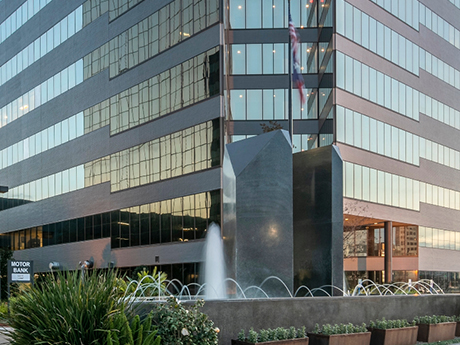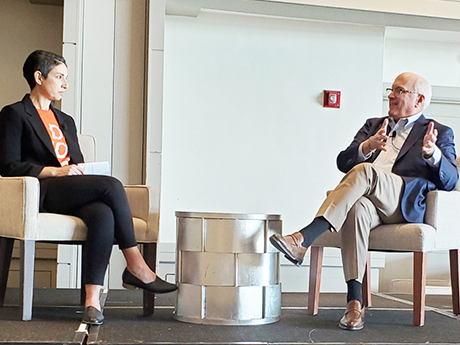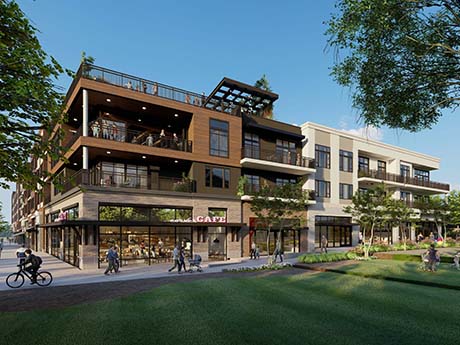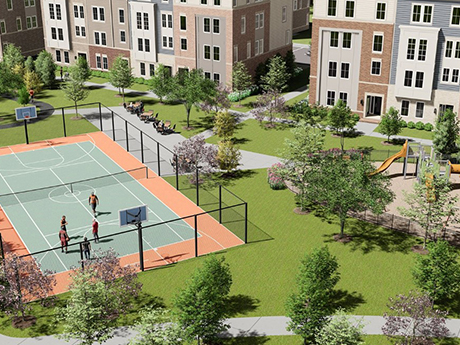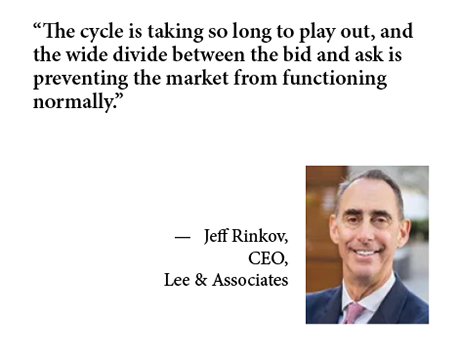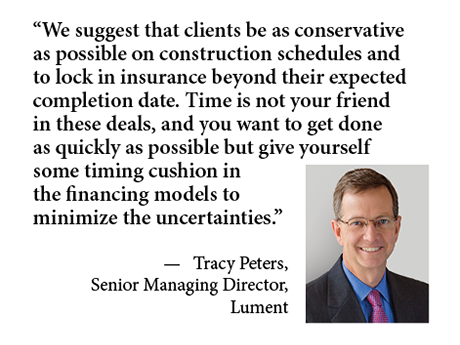By Nicole Schmidt, managing partner, Oberon Securities Whether it’s traditional bank loans, private equity or securitized financings, it’s clear that a large number of commercial property owners are facing serious credit issues. Many office tenants continued making rent payments even through COVID-19, and the work from home trend has now left them with excess space. But as leases expire, they are downsizing their physical footprints, leaving landlords with significant vacancies amid very soft demand. According to a November 2023 article in The Wall Street Journal, “Only one out of every three securitized office mortgages that expired during the first nine months of 2023 was paid off by the end of September, according to Moody’s Analytics. That is the smallest share for the first nine months of any year since at least 2008 and well below the nadir reached in 2009, when 47 percent of these loans got paid off.” Add to that the impact of WeWork’s recent bankruptcy filing and projected high office vacancy rates in New York City and other major markets — plus higher interest rates — and the inevitable result is lower valuations that don’t support existing levels of debt on many properties. Higher vacancy rates, higher …
Features
By Taylor Williams ATLANTA — Depending on the era in which you came of age and the general experiences you’ve had in life, the notion that “things can always get worse” can be easy to endorse. As it pertains to commercial lending and borrowing, the consensus narratives that have prevailed ever since the Federal Reserve began jacking up interest rates in early 2022 have largely followed the same script: “Hunker down.” “Survive till ’25.” “Delay and defer.” In other words, do whatever you have to do to avoid the sting of the 11 interest rate hikes totaling 500-plus basis points that have been enacted over the past 20 months, raising the federal funds rate from near zero percent to its current target range of 5.25 to 5.5 percent. According to data compiled by Walker & Dunlop, the average all-in interest rate on a 10-year, fixed-rate Fannie Mae mortgage — assuming a conservative structure of 55 percent loan-to-value — is roughly 6.25 percent. Since rate hikes began, multifamily lenders across various markets have stated that leverage ratios in the neighborhood of 55 to 60 percent have become the norm, all other factors being held equal. Cloud of Uncertainty Despite some seemingly …
Seniors Housing Acquisitions Make More Sense Than Development in Today’s Market, Says Benchmark CEO Tom Grape
by Jeff Shaw
The dearth of new supply in the seniors housing space is a double-edged sword, says Tom Grape, founder, chairman and CEO of regional operator Benchmark Senior Living. While the lack of new product has provided a much-needed lift to operators of existing communities seeking to boost occupancy, it’s also a missed opportunity for developers chomping at the bit to start new projects. The year-over-year (YOY) inventory growth in seniors housing was 1.3 percent in the third quarter, nearly the smallest YOY growth since 2012, according to NIC MAP. Grape foresees the possibility of even slower inventory growth in the near term. “We’ve got a development pipeline, but we’re sort of parking it. Construction costs remain high. We’re starting to see early signs that maybe those are softening a bit, but nothing has really softened materially,” said Grape during the keynote interview at the seventh annual InterFace Seniors Housing Northeast conference in Philadelphia on Wednesday, Nov. 29. Laura Cambria of KARE, senior vice president of operations at KARE, a senior living staffing app that connects caregivers with operators, conducted the interview. France Media’s InterFace Conferece Group and Seniors Housing Business hosted the conference at the Hilton Philadelphia at Penn’s Landing. The daylong event …
ATLANTA — Multifamily developers are bracing for the uncertainty of 2024 as their projects are delivering into a landscape where new supply is outpacing demand by a significant margin. In the third quarter, a total of 114,000 new multifamily units were delivered in the United States compared to 82,100 absorbed, according to research from CBRE. The absorption figure is technically rebounding as it represents the highest quarterly figure since early 2022, but there is still a sizeable delta compared to supply growth. The trailing four-quarter total for U.S. multifamily deliveries stands at 376,500 units, which CBRE reports is the highest since it began tracking the metric 27 years ago. “This is historic supply,” said Todd Oglesby, managing director of Alliance Residential Co.’s Southeast division. “It’s at the highest levels since the 1980s.” Oglesby made his comments as part of a panel of developers at France Media’s InterFace Multifamily Southeast, an annual conference held on Thursday, Nov. 30 at the Westin Buckhead hotel in Atlanta. Chad Riddle, senior project manager at Bohler, moderated the panel entitled “Given the Interest Rate & Debt Market Environment, How Are Developers Making New Projects Pencil?” Throughout the full-day conference, several panelists mentioned that their firms’ …
By Mark Taylor, managing director, residential, American Real Estate Partners For young families across the country, the dream of homeownership has been delayed due to high mortgage rates, low supply and rising build costs. Many millennials, particularly those with growing families, are ready to move into their first homes but cannot afford either the down payment or the increased mortgage payment. According to Pew Research Center, 65 percent of Americans under the age of 35 still rent, as opposed to a market average of around 33 percent. That’s why build-to-rent (BTR) homes are booming; they offer residents the space and privacy of a house with a lower price tag, alongside the extensive amenities and institutional property management services of rental apartment living. For most people, rent is by far their largest monthly expense. Ideally, they want to live somewhere that is safe, stylish and comfortable — all things that BTR homes offer. Here are some of the reasons BTR is taking the real estate industry by storm. The Economics BTR appeals to investors as well as residents. Whether townhouses or single-family, BTR homes are typically larger than traditional apartment units and generally include an attached garage. The trunk rent, or …
Bid-Ask Spread Continues to Throttle Down Multifamily Investment Sales, Say InterFace Panelists
by Jeff Shaw
ATLANTA — Investors in the multifamily sector are having trouble getting deals done in 2023, and 2024 isn’t looking to start out much better. The culprit is the bid-ask spread — the gap between what sellers believe their property is worth and what buyers are willing to pay. That’s according to a panel of multifamily investors, several of whom described transacting in the present environment to be a “slog.” The panel, titled “Investment Outlook: When will the Bid-Ask Gap Narrow, the Market Stabilize and Transactions Resume in Earnest?,” was held yesterday at France Media’s InterFace Multifamily Southeast conference at the Westin Buckhead in Atlanta. The panel included Brian Grant, senior vice president of acquisitions of Equity Residential; John Leonard, first vice president/regional manager of Marcus & Millichap; Eddy O’Brien, managing partner and co-founder of Blaze Capital Partners; Matt Trammell, chief financial officer of Wood Partners; Kristina Lynn, senior director, of housing and alternative investments in the Americas at Nuveen Real Estate; and moderator Paul Berry, president and chief operating officer of Mesa Capital Partners, who recently joined the firm from CBRE. Berry kicked off the discussion by noting that “the bid-ask spread affects all of us.” While he noted that …
AcquisitionsContent PartnerFeaturesLee & AssociatesMidwestMultifamilyNortheastOfficeRetailSoutheastTexasWestern
Is a Rebound in the Cards for Investment Sales Anytime Soon?
Would-be commercial real estate investors and sellers for the last several months have been waiting for a sign that the Federal Reserve has tamed inflation, therefore giving the central bank reason to officially end its tightening program. October’s better-than-expected consumer price index increase of 3.2 percent — versus the 3.3 percent consensus — may have delivered that signal. The futures markets immediately reduced the probability of a Fed interest rate hike in December to zero, with many capital markets analysts suggesting that it would begin to cut rates midway through 2024. But just an end to rate hikes could fuel investment sales activity, says Jeff Rinkov, CEO of Lee & Associates Commercial Real Estate Services. “Once investors see some positive sentiment from the Fed, I think they’ll start to get interested in deploying what we believe is an enormous amount of capital that has been waiting on the sidelines,” he explains. “I also think that’s when investors will be met by more accommodating sellers. At the moment, price discovery continues to be very challenging and is driving a sluggish transaction environment.” Crashing Sales Indeed, investment sales volume through three quarters of 2023 totaled $276.3 billion, a year-over-year decline of 55 …
Cushman & Wakefield: Manhattan’s Fifth Avenue Remains Most Expensive Street in the World for Retailers
by John Nelson
NEW YORK CITY — Fifth Avenue in Manhattan has retained its No. 1 ranking as the world’s most expensive retail destination at approximately $2,000 per square foot, which is unchanged from last year. That’s according to the 33rd edition of the Cushman & Wakefield (NYSE: CWK) Main Streets Across the World, an annual report that examines retail rental rates around the world in “high street” locations, referring to bustling, high-end retail districts. Fifth Avenue is world-renowned for its luxury offerings, including Bergdorf Goodman, Prada, Saks and Tiffany, among others. Additions to Fifth Avenue’s retail store count this year include a new store for Harry Winston and newcomers to the corridor Asics, Dyson, Skechers, Johnston & Murphy and Bandier, according to online directory Visit 5th Avenue. While on par with the rents charged last year, Fifth Avenue’s average retail rate is up 14 percent from pre-pandemic levels, making it only one of three high streets in the top 10 that have increased rates since that time span. The No. 2 retail destination in Main Streets Across the World is Milan’s Via Montenapoleone at $1,766 per square foot. The district jumped a spot into second from last year’s report by pushing rental …
Affordable HousingContent PartnerDevelopmentFeaturesLoansLumentMidwestNortheastSoutheastTexasWestern
How to Clear Affordable Housing’s Construction Financing Hurdle
Developers are finding it tougher than ever to finance affordable housing. And often, the biggest hurdle for the sector’s borrowers involves construction — either obtaining that initial loan at a manageable cost or qualifying for take-out financing after a protracted construction period — which has strained resources and delivery schedules for a number of developments. Limitations on rent increases make the industry especially vulnerable to rising costs, and expenses today have risen precipitously across the board. Rents have also grown, but not on pace with construction and operating costs driven up by inflation, wage pressures, soaring insurance premiums and a series of interest rate hikes, observes Tracy Peters, a senior managing director on Lument’s affordable housing production team. “Borrowers are squeezed by a number of things in this marketplace,” Peters says. “The fed funds rate climbing 5 percent over the last two years means the interest rates on construction loans have basically come up 5 percent or more over that time. Now folks who had budgeted for a much lower interest rate — if they are still in construction mode — are trying to figure out how to deal with these higher interest rates.” At the same time, the …
By Barry Hand, principal at Gensler Recently at the Urban Land Institute’s (ULI) fall conference, there were multiple themes that percolated upward and were left imprinted on the minds of the thousands of attendees moving from one session of experts to the next. These topics included: Upon reflection, each of these issues has been brewing for a while and is not surprising. In many ways, the individual topics are related and can be solved together. Lack of affordable housing in numerous markets for all income levels is an accelerating issue due to population growth, regulatory/zoning challenges, land costs, horizontal sprawl, construction costs, NIMBYism and the cost of capital. Each of these issues fuels concerns for lenders that are already potentially facing stress within their commercial real estate portfolios. The solution will require a multi-faceted approach. Most metropolitan areas are seeing population growth. These same communities are chasing stronger commercial tax bases as well as the same employers and users who need accessible, mixed-income workforce housing. Again, there is no single magic solution. But legislation and zoning changes to allow greater residential densities and/or residential conversions from unoccupied or blighted commercial structures will bring quick and creative solutions for housing and commercial …


